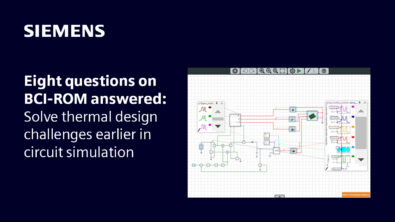The Backwards World of Component Selection
It’s like moving furniture around and then finding out later you don’t like the sofa.
Much of the your end PCB product costs can be directly influenced by the parts selected up front during the schematic capture phase of the design process. When you incorporate information into the designer’s part selection interface such as preferred part status, compliance, and/or obsolescence; you can reduce the work and re-work of designs thus saving you costs.
Today, it is a challenge for designers to produce designs that are pushed by time-to market, compliance restrictions, and the constant need to reduce costs. Many times, the designer does not have access to critical component information within their “field-of-vision” and rely on other disciplines to constantly check their part selection after they’ve done all the “hard work” of designing. I equate this to me finding furniture for my home, moving the furniture around to the perfect spot; and then my wife saying, “No, I don’t like the pattern on the sofa”. Why couldn’t you tell me what colors you like before I started? Better yet, why didn’t we agree on the sofa at the beginning? Why did I do all of that work fitting that sofa in the Living Room and now you tell me you don’t like it? I should have married your sister – just kidding (SLAP).
This is exactly how designs are being done today and we accept it because it’s the norm. We utilize disconnected 3rd party tools to push non-standard data for validation by somebody else’s database … usually a bill-of-material. We fool ourselves into thinking this process is controlled because we do this during a “design review” … after the room has been completed. Wrong! To me this is like getting your mother-in-law to look at pictures of my room and then tell me what my wife wants. Thanks, but NO THANKS! In this scenario, I’m the designer, my wife is a component engineer, and the mother-in-law is my PLM. I don’t need the pain nor aggravation of dealing with multiple “sources” after I’ve already moved the furniture; all I want is accurate and upfront information. What you need are tools that help you communicate without the overhead of complicated communication; without using transformations of data during the work-in-process phase of the process. What do you need? A multi-phased approach:
- Integrated Library & Component Information – provide the “approved” or “preferred” information within the designers interface to make it easier for them to choose – not another database.
- Alternate Management – Allows approved users to define alternate to existing parts and manage what approved alternates exist.
- Shopping List – Create list of preferred parts for specific sites or projects that designers can easily choose from.
- Production Libraries – Create strong filters that can automatically remove non-standard or obsolete parts from designer’s view and actually highlight failures during design validation.
- Compliance Audits – Allow ANY approved user to view the work-in-process status and run configurable compliance audits before the design is completed.
Why not make it easy on your designers and have them focus on the heavy lifting? Why not be proactive instead of reactive? With xDM Library/DMS, we can provide the infrastructure for this simple communication and drive behavior without complex interfaces or running back and forth between the fashion consultant. Take a look at my webinar for more details on how xDM Library/DMS can provide this seamless solution for you.
PS – I’m sure we all love our mother-in-laws, just don’t need to include them in every decision 🙂



